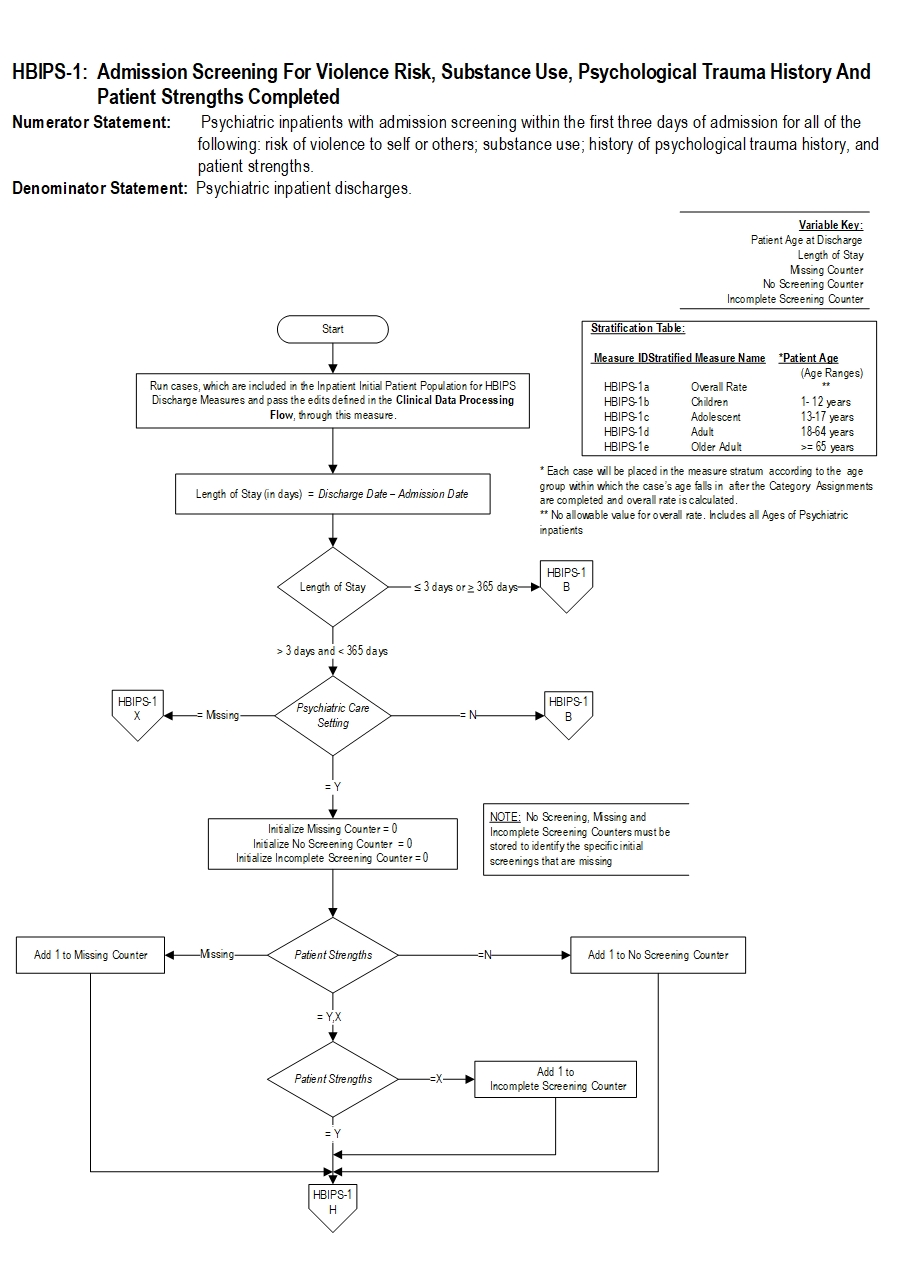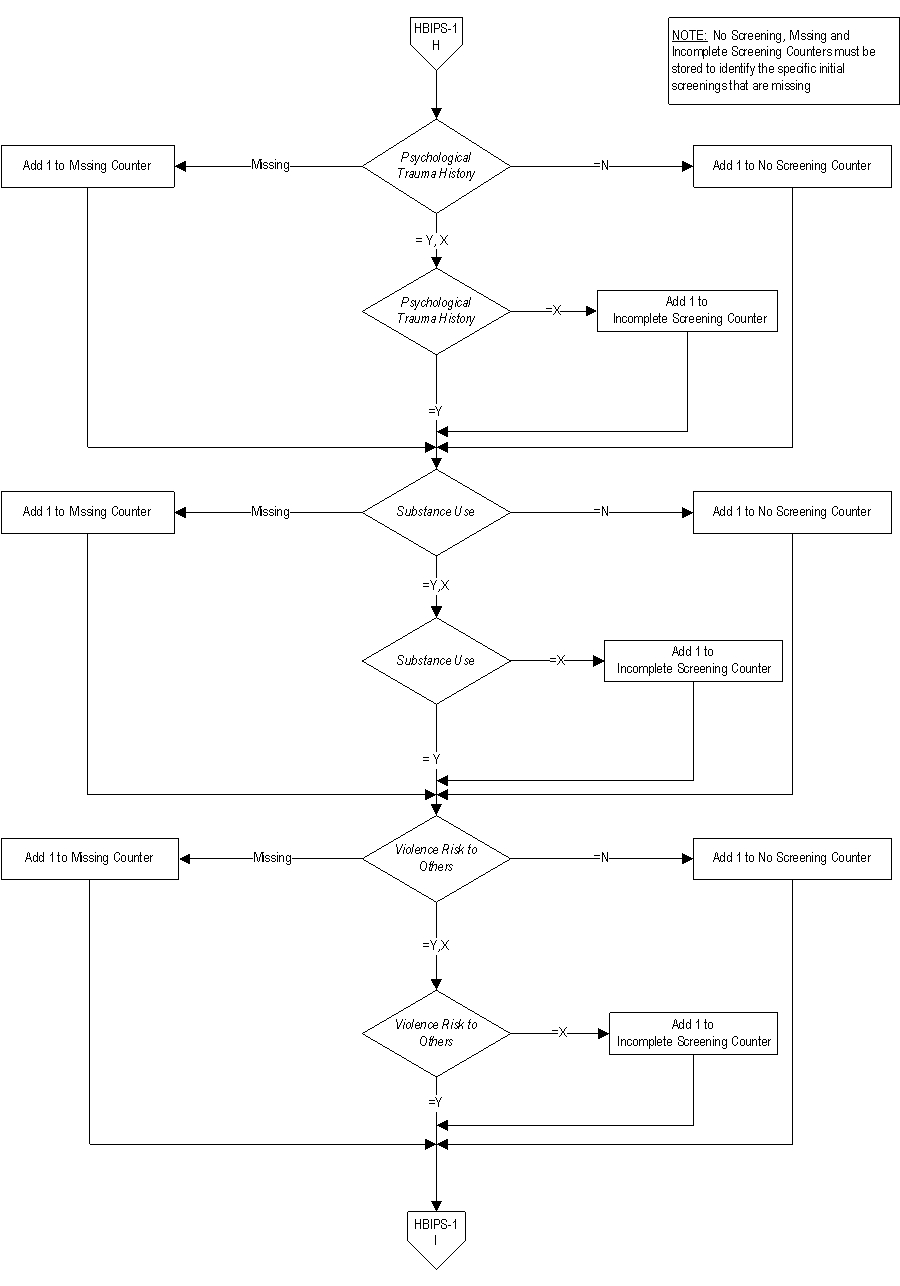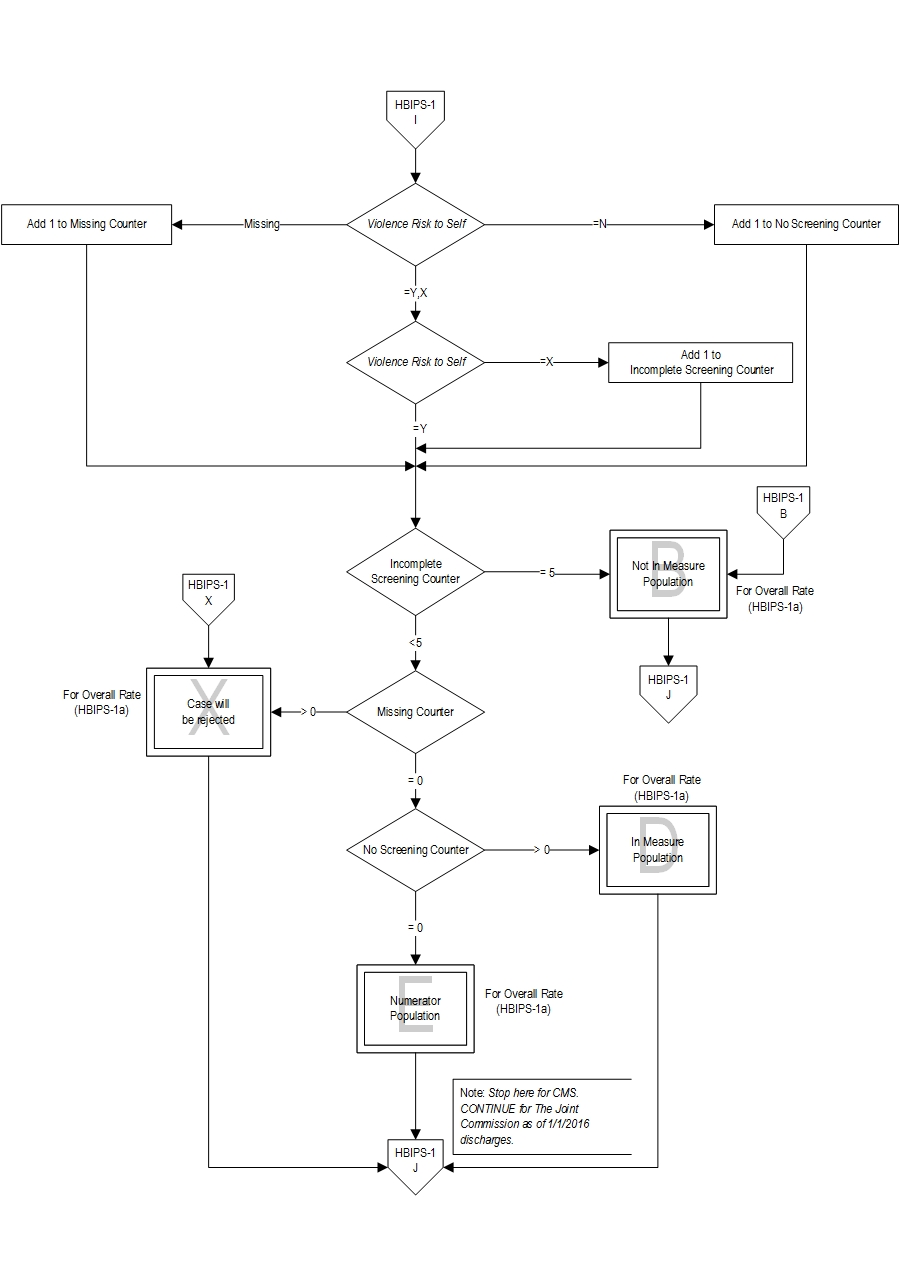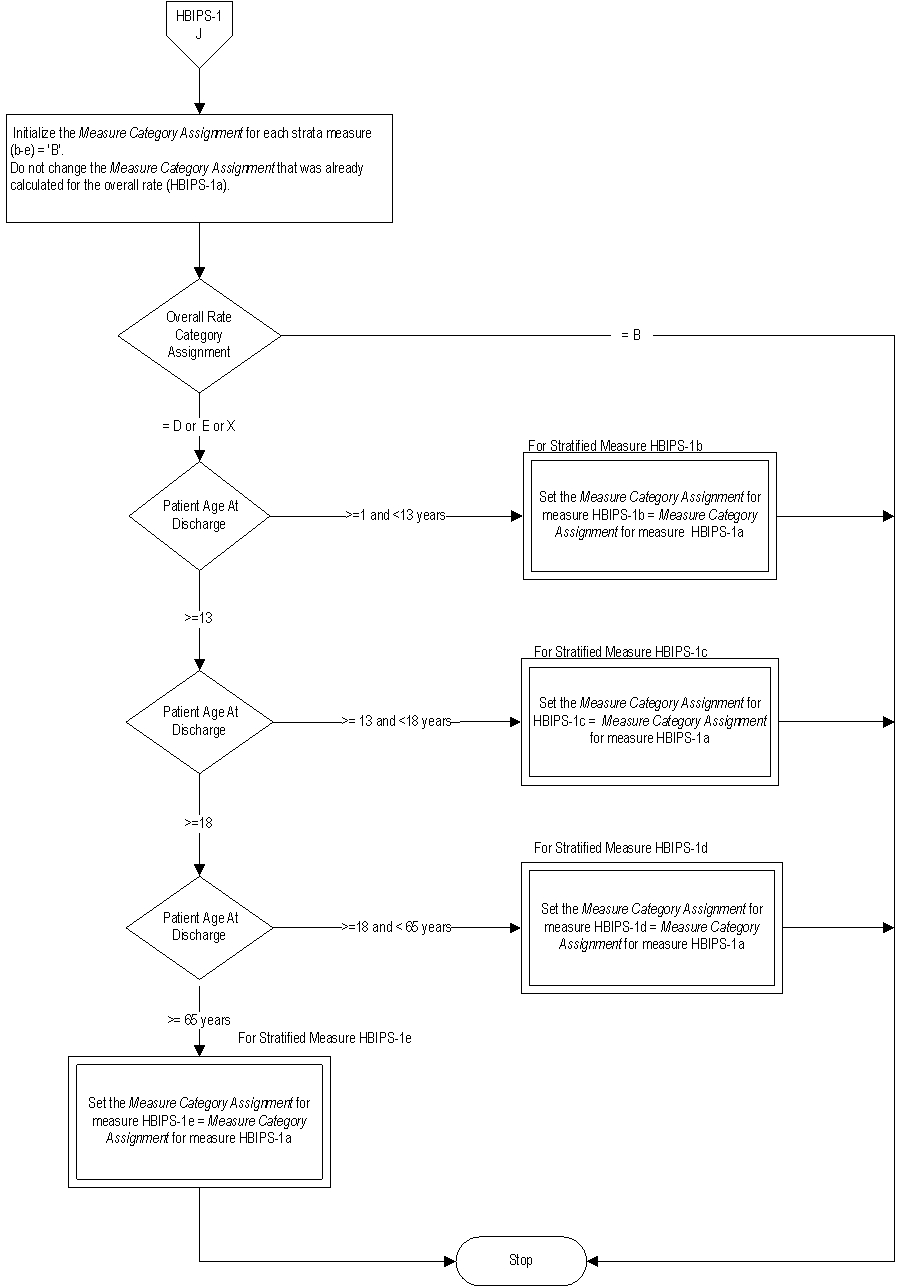Measure Information Form
Version 2023A
Measure Information Form
Included Populations: Not applicable Excluded Populations: None Data Elements:Denominator Statement: Psychiatric inpatient discharges
Included Populations:Excluded Populations:
- Patients with ICD-10-CM Principal or Other Diagnosis Codes for Mental Disorders as defined in Appendix A, Table 10.01
Data Elements:
- Patients for whom there is an inability to complete admission screening for Violence Risk, Substance Use, Psychological Trauma History and Patient Strengths within the first three days of admission
- Patients with a Length of Stay ≤ 3 days or ≥ 365 days
- American Psychiatric Association (2016). Practice Guidelines for the Psychiatric Evaluation of Adults. Third edition. Arlington (VA): American Psychiatric Association.
- Lyons JS, Uziel-Miller ND, Reyes F, Sokol PT (2000). Strengths of children and adolescents in residential settings: Prevalence and associations with psychopathology and discharge placement. Journal of the American Academy of Child & Adolescent Psychiatry, Vol 39(2): 176-181.
- NASMHPD. (2005) Position Statement on Services and Supports to Trauma Survivors. Alexandria, VA: NASMHPD.
- Rapp CA (1998). The strengths model: Case management with people suffering from severe and persistent mental illness. London: Oxford University Press.
- Ruiz P (2004). Addressing Culture, Race, & Ethnicity in Psychiatric Practice. Psychiatric Annals, Vol 34(7): 527-532.
- Ziedonis DM (2004). Integrated treatment of co-occurring mental illness and addiction: Clinical intervention, program, and system perspectives. CNS Spectrums 9(12): 892,894-904,925.




CPT® only copyright 2022 American Medical Association. All rights reserved. CPT® is a registered trademark of the American Medical Association.
You, your employees and agents are authorized to use CPT® only as contained in The Joint Commission performance measures solely for your own personal use in directly participating in healthcare programs administered by The Joint Commission. You acknowledge that the American Medical Association (“AMA”) holds all copyright, trademark and other rights in CPT®.
Any use not authorized herein is prohibited, including by way of illustration and not by way of limitation, making copies of CPT® for resale and/or license, transferring copies of CPT® to any party not bound by this Agreement, creating any modified or derivative work of CPT®, or making any commercial use of CPT®. License to use CPT® for any use not authorized herein must be obtained through the American Medical Association, Intellectual Property Services, AMA Plaza, 330 North Wabash Avenue, Suite 39300, Chicago, Illinois 60611-5885. Applications are available at the American Medical Association Web site, www.ama- assn.org/go/cpt.
U.S. Government Rights This product includes CPT® which is commercial technical data, which was developed exclusively at private expense by the American Medical Association, 330 North Wabash Avenue, Chicago, Illinois 60611. The American Medical Association does not agree to license CPT® to the Federal Government based on the license in FAR 52.227-14 (Data Rights - General) and DFARS 252.227-7015 (Technical Data - Commercial Items) or any other license provision. The American Medical Association reserves all rights to approve any license with any Federal agency.
Disclaimer of Warranties and Liabilities. CPT® is provided “as is” without warranty of any kind, either expressed or implied, including but not limited to the implied warranties of merchantability and fitness for a particular purpose. Fee schedules, relative value units, conversion factors and/or related components are not assigned by the AMA, are not part of CPT®, and the (AMA is not recommending their use. The AMA does not directly or indirectly practice medicine or dispense medical services. The responsibility for the content of this product is with The Joint Commission, and no endorsement by the AMA is intended or implied. The AMA disclaims responsibility for any consequences or liability attributable to or related to any use, non-use, or interpretation of information contained or not contained in this product.
This Agreement will terminate upon notice if you violate its terms. The AMA is a third party beneficiary to this Agreement.
Should the foregoing terms and conditions be acceptable to you, please indicate your agreement and acceptance by clicking below on the button labeled “accept”.